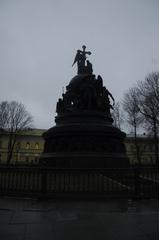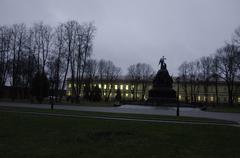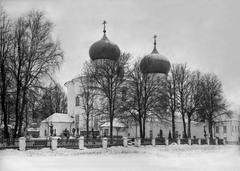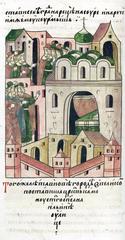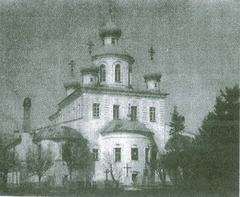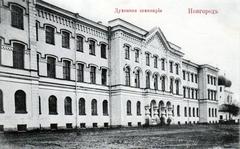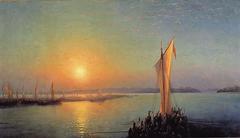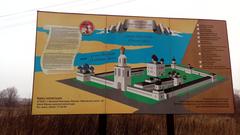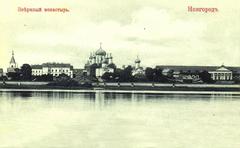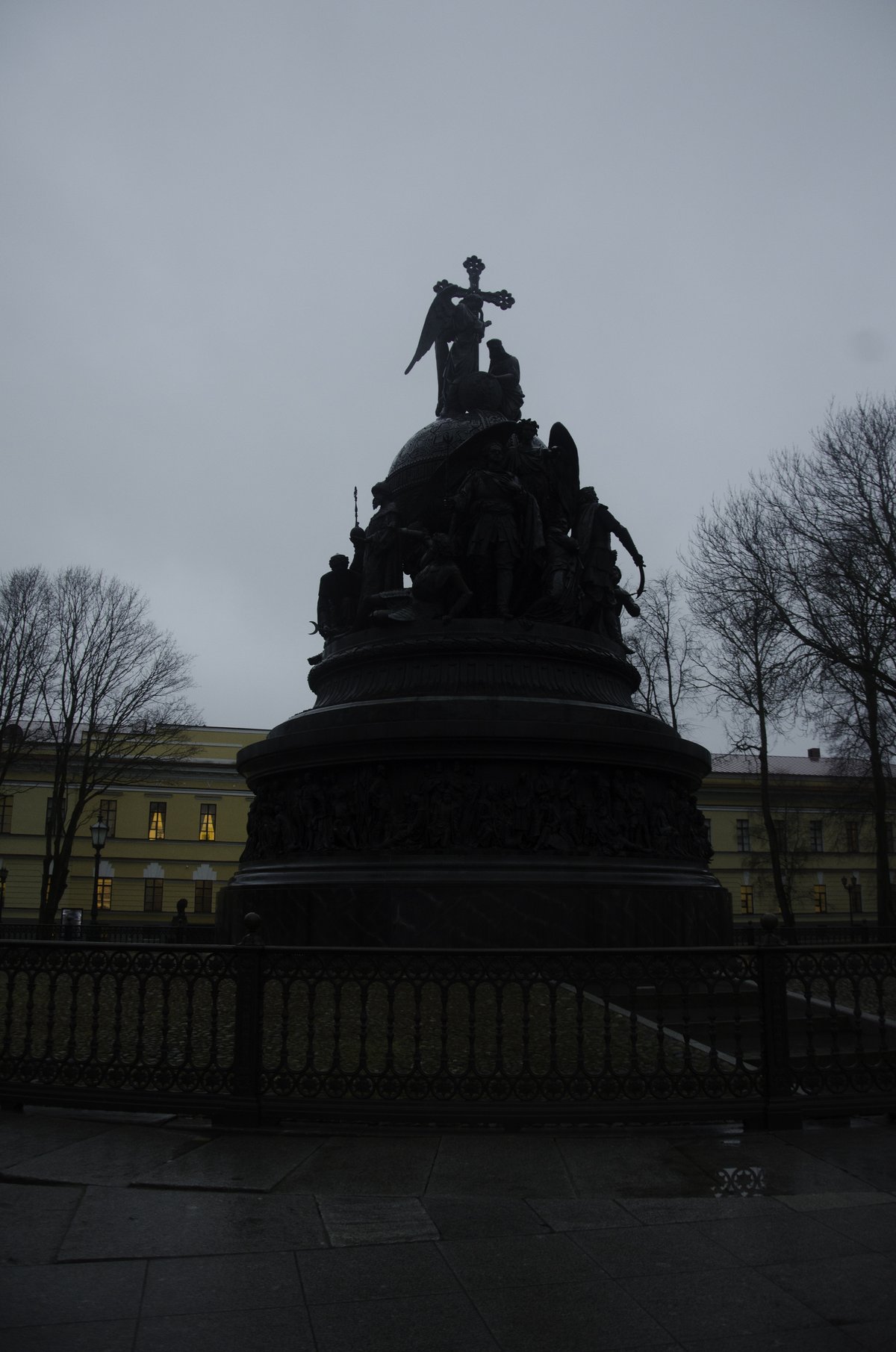
Millennium of Russia Monument: Visiting Hours, Tickets, and Complete Travel Guide
Date: 14/06/2025
Introduction
The Millennium of Russia monument in Veliky Novgorod is a remarkable symbol of Russian statehood and heritage. Unveiled in 1862 to commemorate 1,000 years since the legendary arrival of Prince Rurik in 862 CE, it stands as a testament to the nation’s origins and evolution. Located in the heart of the Novgorod Kremlin—one of Russia’s oldest and most storied fortresses—the monument features over 120 bronze figures, representing key figures from Russian history. This guide provides a detailed overview of the monument’s significance, practical visiting information, surrounding attractions, and tips for making the most of your experience (Spotting History; Wikipedia; Russia Beyond).
Table of Contents
- Origins and Historical Significance
- Design, Symbolism, and Artistic Details
- Historical Events and Restoration
- Visiting the Millennium of Russia Monument
- Practical Tips for Visitors
- Seasonal Highlights and Events
- Frequently Asked Questions (FAQ)
- Conclusion
- References
Origins and Historical Significance
The Millennium of Russia monument was commissioned to celebrate a thousand years of Russian statehood, marked from the invitation of Prince Rurik to rule Novgorod in 862 CE—a foundational event in Russian history (Wikipedia). Its unveiling in 1862, attended by Emperor Alexander II, signaled a period of growing national identity and was the first monument in Russia dedicated to its statehood (Russia Beyond).
Design, Symbolism, and Artistic Details
Competition and Construction
A national competition in 1859 selected architect Viktor Hartmann and sculptor Mikhail Mikeshin’s design (Wikipedia). The 15.7-meter-tall monument features a bell-shaped granite pedestal, symbolizing unity and faith, topped by a globus cruciger (globe with cross), representing sovereign power (Novgorod.ru).
Six sculptural groups depict major epochs in Russian history, with over 120 figures representing monarchs, military leaders, clergy, artists, and cultural icons. Notable figures include Rurik, Vladimir the Great, Ivan III, Peter the Great, and literary figures such as Pushkin. The monument’s three tiers narrate the foundation of the state, the consolidation of power, and the flourishing of Russian culture (Novgorod.ru).
Materials and Craftsmanship
The granite base was sourced from Karelia, and the bronze statues—over 100 tons—were cast in St. Petersburg. The monument’s craftsmanship exemplifies 19th-century Russian historicism, blending Romantic and Neoclassical influences with Orthodox motifs (Spotting History).
Historical Events and Restoration
After the Russian Revolution, the monument was partly concealed due to its imperial symbolism. During World War II, it suffered damage and the threat of removal by occupying forces, but was preserved and restored after the war (Russia Beyond; Novgorod.ru). Its survival and restoration have reinforced its role as a symbol of Russian resilience and national memory, earning it a place on the 5-ruble coin in 1988 (Wikipedia).
Visiting the Millennium of Russia Monument
Location and Setting
The monument stands in the landscaped central square of the Novgorod Kremlin (Detinets), offering views of the Saint Sophia Cathedral and fortress walls—making it a focal point for any walking tour of Veliky Novgorod (Wildtrips).
Visiting Hours
- Monument Area: Open 24/7 with free access; no ticket required to view the monument outdoors.
- Kremlin Grounds/Museums: Generally open daily from 10:00 AM to 6:00 PM (hours may vary seasonally or for special events; check the official tourism website for updates).
Tickets and Entry
- Monument: Free to access at any time.
- Kremlin Museums & Guided Tours: Entry fees typically range from 300–500 RUB for adults, with discounts for students and seniors. Tickets are available at the entrance or online (Project Novgorod Travel).
Accessibility
The monument is on level ground with paved paths, making it accessible for visitors with limited mobility. Benches and rest areas are available. Some uneven surfaces exist due to the historic nature of the Kremlin, but assistance is available upon request (Audiala).
Guided Tours and Events
- Guided Tours: Offered in multiple languages, focusing on the monument’s history and symbolism, often available through the Novgorod State United Museum.
- Events: The monument is a hub for city celebrations, festivals, and historical reenactments, especially during Russia Day, City Day, and Maslenitsa (Project Novgorod Travel).
Nearby Attractions
- Saint Sophia Cathedral: Oldest stone church in Russia.
- Novgorod Kremlin Walls and Towers
- Yaroslav’s Court: Medieval trading center.
- Vitoslavlitsy Museum of Wooden Architecture: Showcasing Russian folk wooden buildings (Audiala).
- Volkhov River Embankment: Scenic walks and boat trips.
Practical Tips for Visitors
- Best Time to Visit: Early morning or late afternoon for optimal lighting and fewer crowds.
- Photography: Allowed at all times; avoid using flash or tripods during special events.
- Clothing: Dress modestly, especially when visiting churches.
- Language: Some English signage and guides are available; learning basic Russian phrases or using a translation app is helpful.
- Currency: Russian Ruble (RUB); credit cards are widely accepted, but cash is useful for small purchases.
- Getting There: Veliky Novgorod is accessible from Moscow and St. Petersburg by train, bus, or car. The monument and main attractions are walkable within the city center.
Seasonal Highlights and Events
- Summer (June–August): Warm weather, festivals, and outdoor performances.
- Spring/Autumn: Mild climate and fewer tourists.
- Winter: Picturesque snow-covered landscape; festive markets and events for Orthodox Christmas and New Year (Audiala).
Frequently Asked Questions (FAQ)
Q: What are the monument’s visiting hours?
A: Accessible 24/7 with free entry. Kremlin museums generally open 10:00 AM–6:00 PM.
Q: Is photography allowed?
A: Yes, photography is permitted.
Q: Are guided tours available in English?
A: Yes, through the Novgorod State United Museum and other local operators.
Q: Is the site accessible for visitors with limited mobility?
A: Yes, with paved paths and benches; some historic surfaces may be uneven.
Q: Are tickets needed to visit the monument?
A: No, but tickets are required for museum exhibitions and some guided tours.
Q: What is the best season to visit?
A: Spring, early autumn, and summer for mild weather; winter for a unique snowy atmosphere.
Conclusion
The Millennium of Russia monument is a must-see landmark in Veliky Novgorod, offering visitors a profound connection to Russian history, artistry, and national identity. Its central location, free access, and proximity to other major historical sites make it an essential stop for every traveler. To enrich your visit, consider joining a guided tour, attending local festivals, and exploring the neighboring attractions. For the latest information and interactive resources, download the Audiala app.
Embrace the opportunity to experience a living symbol of Russia’s past—where history, art, and culture converge.
References
- Millennium of Russia - Spotting History
- Millennium of Russia - Wikipedia
- Millennium of Russia Monument History - Russia Beyond
- Millennium of Russia Monument Visitor Guide - Novgorod.ru
- Veliky Novgorod Tourism Portal - Project Novgorod Travel
- UNESCO World Heritage Site - Novgorod
- Millennium of Russia Monument Visiting Information - Audiala
- Veliky Novgorod Attractions - Wildtrips
